
Ducati Diavel Service Manual: Battery
Battery safety rules
Warning
Before carrying out any operations on the battery, keep in mind the safety standards (sect. 1 - 3, General safety rules).
When under charge, batteries produce explosive gases. Keep batteries away from heat sources, sparks or open flames.
Instructions for use
The battery is a sealed, maintenance-free type and therefore requires no servicing installation.
Note
Always keep the battery clean. Apply grease around the battery terminal clamps to prevent corrosion.
Warning
Never remove the valve cover located on top of the cover. If the block, cover or terminals are broken or if the valve cover has been tampered with it is absolutely necessary to replace the battery.
Important
If the motorcycle is left unused for more than 30 days, remove the battery and store it in a safe, cool place.
Always charge the battery before the first operation and after long storage periods - such as before selling the vehicle.
Removal of the battery 
undo the screws (1) and remove the battery retaining bracket (2).
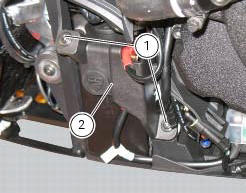
Slide out the battery (3) from its housing and, always starting from the negative terminal (-), loosen the screws (4).
Remove the positive cable (5), the abs positive cable (6) from the positive terminal, and the negative cable (7) from the negative terminal.
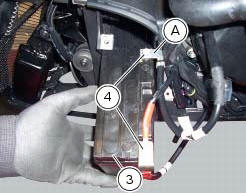
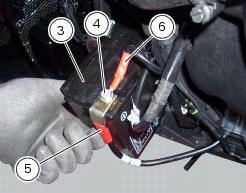
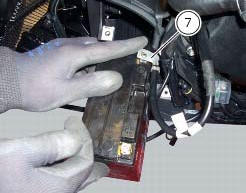
Remove the battery drift (6) on the battery support (7).
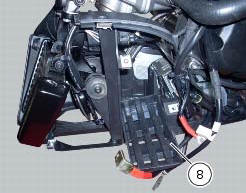
Refitting the battery
Position the battery drift (6) on the battery support (7).
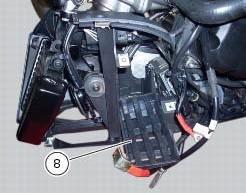
Place the battery (3) in its compartment by connecting first cable (7) to the negative terminal with the screw (4).
Connect the positive cable (5) and then the abs positive cable (6) to the positive terminal with the screw (4).
Tighten the terminal screws (4) to a torque of 10 nm +/- 10% (sect. 3 - 3Frame torque settings) and apply grease around the battery terminal clamps to prevent oxidation.
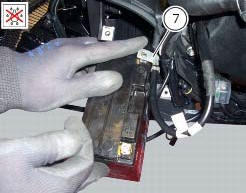
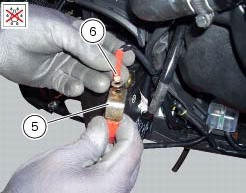
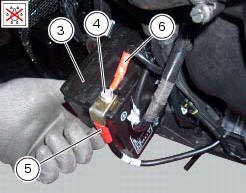
Place the battery (3) on its support, then position the retaining bracket (2) and tighten the screws (1) to a torque of 10 nm +/- 10% (sect. 3 - 3, Frame torque settings).
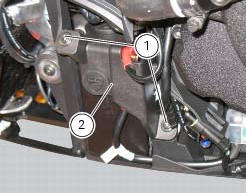

 Topping up the electrolyte
Topping up the electrolyte
Warning
Before carrying out any operations on the battery, keep in mind the
safety standards (sect.1 - 3, General safety rules).
The electrolyte in the battery is toxic and can cause burns if it ...
 Alternator
Alternator
It is equipped with a 12 v, 430 w generator, consisting of a fixed element
(stator, a) located on the generator cover and
of a movable element (rotor, b) fixed to the crankshaft.
Note
To chec ...
Other materials:
Refitting the radiator
The reassembly procedure is the same for both radiators.
Check for the nuts with clips (8).
Refit the rh radiator (13) on the frame and tighten the screws (4) and (5)
with the spacers (6) to a torque of 10 nm
+/-10% (sect. 3 - 3, Frame torque settings).
Connect the connections of ...
Transmission
Wet clutch controlled by the lever on left-hand side of the
handlebar.
Transmission from engine to gearbox primary shaft via spur
gears.
Front chain sprocket/clutch gearwheel ratio:
33/61
6-speed gearbox with constant mesh gears, gear change
pedal on left side of motorcycle.
Gearbox ou ...
Overhaul of the connecting rods
Make the following dimensional checks on the connecting rods:
Clearance with gudgeon pin on assembly.
In the event of excessive wear (sect. 3 - 1.1, Crankshaft), replace the
connecting rod.
The small end bushing must be in good condition and firmly driven into its seat.
Check for para ...